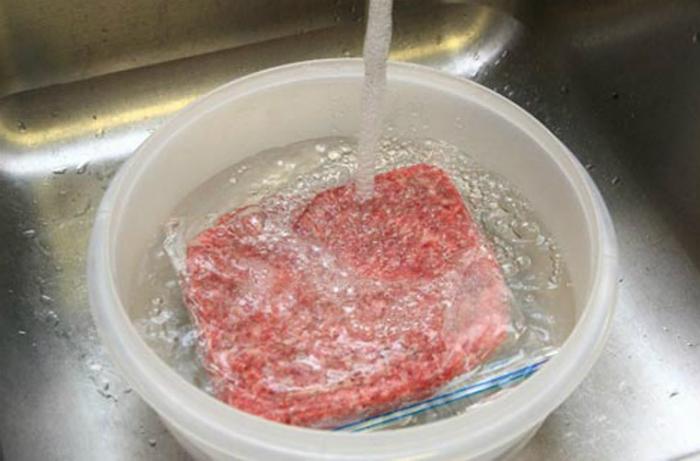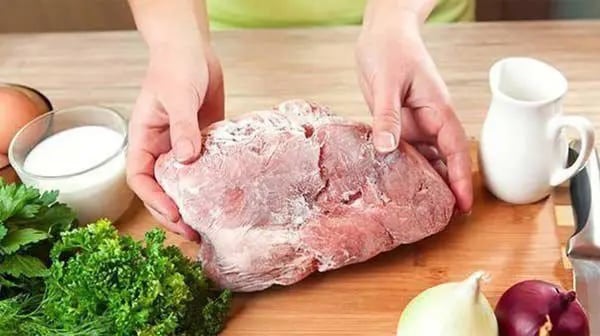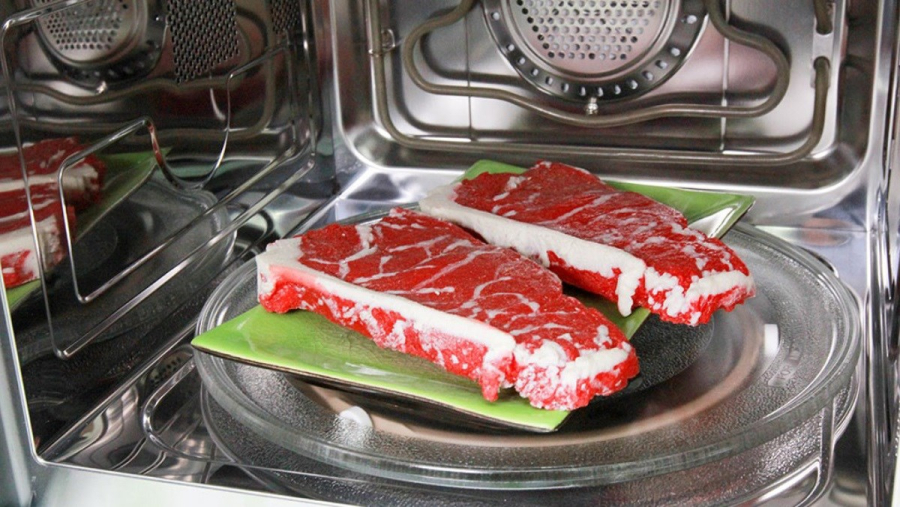Freezing is an effective method of food preservation, inhibiting bacterial growth and maintaining meat quality. During storage, there are three main factors affecting meat quality: microbial and enzyme activity, oxidation, and the growth of harmful bacteria. These factors need to be tightly controlled to ensure that the meat retains its best flavor and nutritional value after processing.
Meat contains a large amount of water, and when the environmental temperature drops below 0°C, the water in the meat will begin to freeze gradually. During this phase, moisture in the meat decreases, and chemical reactions slow down or even stop entirely, leading to the inability of bacteria and microorganisms to grow, although they are not completely destroyed. Therefore, freezing is considered an effective method to slow bacterial and enzymatic activity and reduce oxidation, thereby preserving the freshness of the meat.
Many people often have the habit of taking meat out of the freezer and soaking it in water for about 30-60 minutes to defrost it quickly. However, experts advise that to ensure food safety and maintain nutritional quality, the defrosting process needs to be done more carefully. Soaking meat in water or leaving it at room temperature are unsafe methods that can facilitate bacterial growth and pose health risks.

Many people have the habit of taking meat out of the freezer and soaking it in water to defrost quickly
So, how should meat be defrosted to ensure safety and quality?
To protect your health and maintain the nutritional value of the meat, the slow defrosting method is considered the best. Simply leave the packaged meat in its original packaging and transfer it from the freezer to the refrigerator. This process allows the meat to defrost gradually, helping to limit the invasion and growth of bacteria.
Although this method preserves the flavor and nutrition of the meat, its main disadvantage is that it takes a long time. For meat that is not used after defrosting, it should be quickly returned to the freezer to prevent bacterial contamination.
Many people often soak meat in water or leave it at room temperature when defrosting, which poses health risks. As the ice crystals in the meat melt, they leave tiny holes on the surface, providing an ideal environment for bacterial growth.
Especially, temperatures between 5°C and 60°C are the perfect range for bacterial growth. If meat is left to defrost at room temperature for too long, the risk of bacterial contamination is very high, and it can even facilitate the growth of pathogens. Consuming meat that has been contaminated with bacteria can lead to various health risks.
After defrosting, it is important to cook the meat immediately. If defrosted meat is left at a temperature of about 20°C for a few hours, the number of bacteria can increase to billions of pathogens per gram of meat, which is extremely dangerous. Additionally, leaving meat at room temperature for too long can also cause vitamin loss and affect the flavor of the product.

It is important to cook the meat immediately after defrosting
Defrosting meat in the microwave: Benefits and precautions
Using a microwave to defrost food is a quick and convenient option, especially when you are short on time. However, there are some important points to note to ensure food safety and maintain the flavor of the meat.
When using a microwave, food can be defrosted in just a few minutes due to its rapid heating capability. However, once the defrosting process is complete, you should cook the food immediately. If defrosted food is refrozen, the risk of bacterial growth increases, and the fresh taste of the meat may be compromised.
A critical factor when defrosting in the microwave is adjusting the time and temperature reasonably. If the temperature is too low, it will take longer to defrost, giving bacteria a chance to grow. Conversely, if the temperature is too high, the outer layer of the meat may cook while the inside remains frozen. This not only affects the quality of the dish but also poses potential risks if bacteria are not completely destroyed.
Therefore, consider using the microwave carefully, following the proper procedure to ensure food safety and taste.

Consider using the microwave carefully
Common mistakes to avoid when defrosting food
Here are two common mistakes that experts advise against to ensure food safety and reduce the risk of bacterial contamination, thereby preserving nutritional quality.
– Leaving meat at room temperature
Leaving frozen meat at room temperature, even during cold winter months, can create favorable conditions for the growth of harmful bacteria. When meat encounters external temperatures, it becomes an ideal environment for bacterial growth, increasing the risk of spoilage and serious bacterial contamination.
– Refreezing thawed food
Another common mistake is refreezing thawed meat or food that has not been completely consumed. After defrosting, the structure of the food may be compromised, making it more susceptible to bacterial contamination and loss of freshness. Refreezing food after it has been thawed not only fails to prevent bacterial growth but also encourages their proliferation, thereby posing a risk of food poisoning when consumed again.
To avoid these unwanted situations, only defrost the portion of food you intend to use immediately, and if there are leftovers, store them in the refrigerator for short-term use. Proper food storage not only ensures health but also maintains the flavor and nutritional value of meals.
In conclusion, to safely and effectively defrost food, the best method is to transfer the meat from the freezer to the refrigerator and let it defrost gradually. This approach not only preserves the nutritional quality but also maintains the delicious flavor of the food. If you need to defrost quickly, using a microwave is a useful option, but remember to cook the food immediately afterward.
Although the defrosting process may seem simple, a lack of attention to microbiological and temperature factors can turn food into a health hazard. Therefore, choosing the right defrosting method is crucial to protecting the health of your family.
The Ultimate Guide to the Perfect BBQ: This Secret Ingredient Replaces Sugar and Honey, Creating Tender, Golden, and Delicious Meat
Instead of using honey or sugar as a marinade for grilled meats, there’s a secret spice that will take your taste buds on an adventure. Imagine a blend so magical it transforms ordinary grilled meats into a flavor sensation. This secret spice is the key to unlocking a whole new world of taste, and it’s about to become your go-to grilling companion.






































